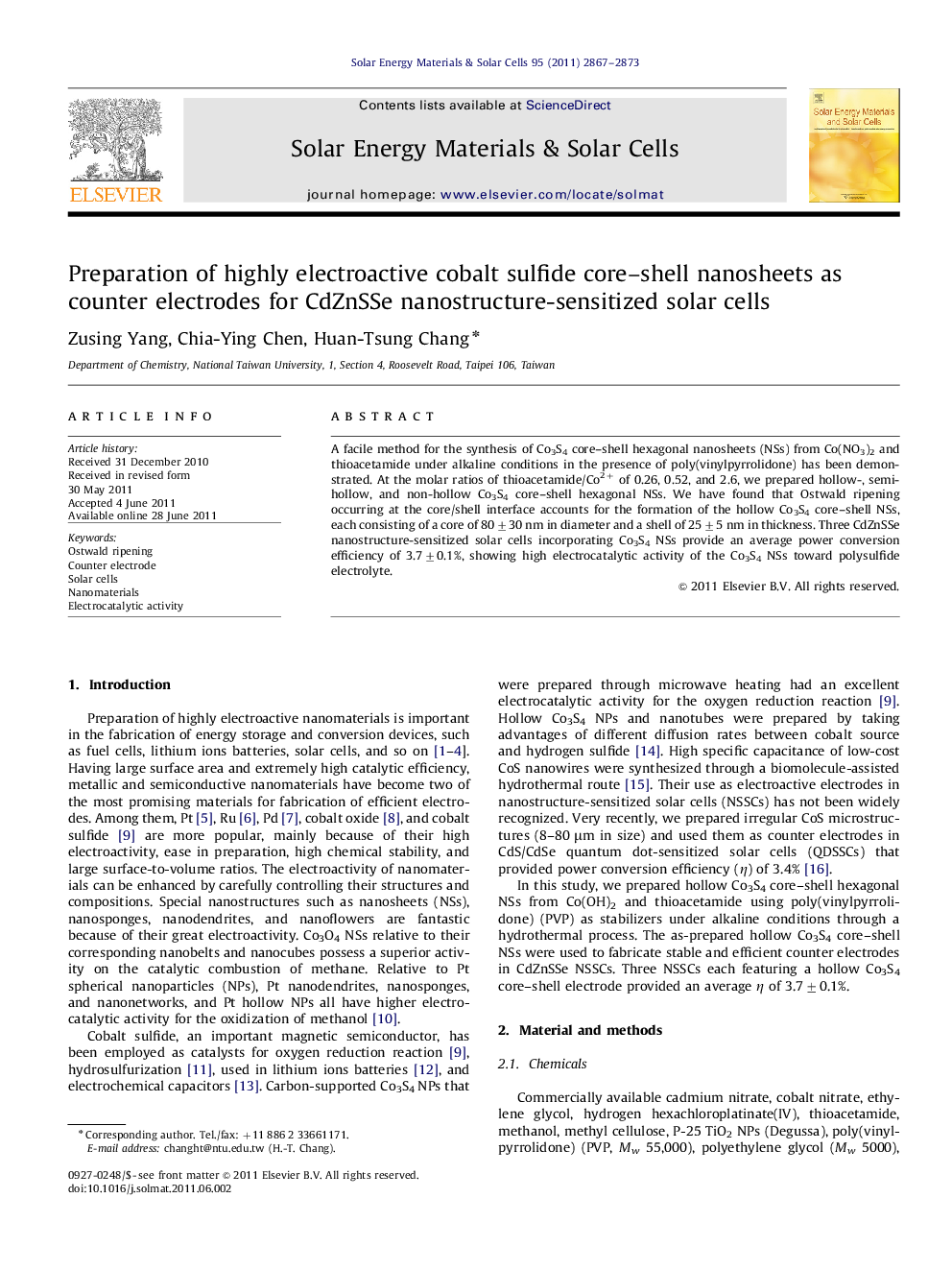| Article ID | Journal | Published Year | Pages | File Type |
|---|---|---|---|---|
| 78622 | Solar Energy Materials and Solar Cells | 2011 | 7 Pages |
A facile method for the synthesis of Co3S4 core–shell hexagonal nanosheets (NSs) from Co(NO3)2 and thioacetamide under alkaline conditions in the presence of poly(vinylpyrrolidone) has been demonstrated. At the molar ratios of thioacetamide/Co2+ of 0.26, 0.52, and 2.6, we prepared hollow-, semi-hollow, and non-hollow Co3S4 core–shell hexagonal NSs. We have found that Ostwald ripening occurring at the core/shell interface accounts for the formation of the hollow Co3S4 core–shell NSs, each consisting of a core of 80±30 nm in diameter and a shell of 25±5 nm in thickness. Three CdZnSSe nanostructure-sensitized solar cells incorporating Co3S4 NSs provide an average power conversion efficiency of 3.7±0.1%, showing high electrocatalytic activity of the Co3S4 NSs toward polysulfide electrolyte.
Graphical abstractHollow, semi-hollow, and non-hollow cobalt sulfide core–shell nanosheets have been prepared as counter electrode for CdZnSSe nanostructure-sensitized solar cells (NSSCs). The NSSCs featuring the cobalt sulfide hexagonal nanosheets all provide power conversion efficiencies greater than 3.6%..Figure optionsDownload full-size imageDownload as PowerPoint slideHighlights► Co3S4 core–shell hexagonal nanosheets (NSs) are synthesized through a hydrothermal process. ► The as-prepared hollow Co3S4 core–shell NSs are then used to fabricate stable and efficient counter electrodes in CdZnSSe nanostructure-sensitized solar cells (NSSCs). ► CdZnSSe NSSCs incorporating Co3S4 NSs provide an average power conversion efficiency of 3.7±0.1%.
